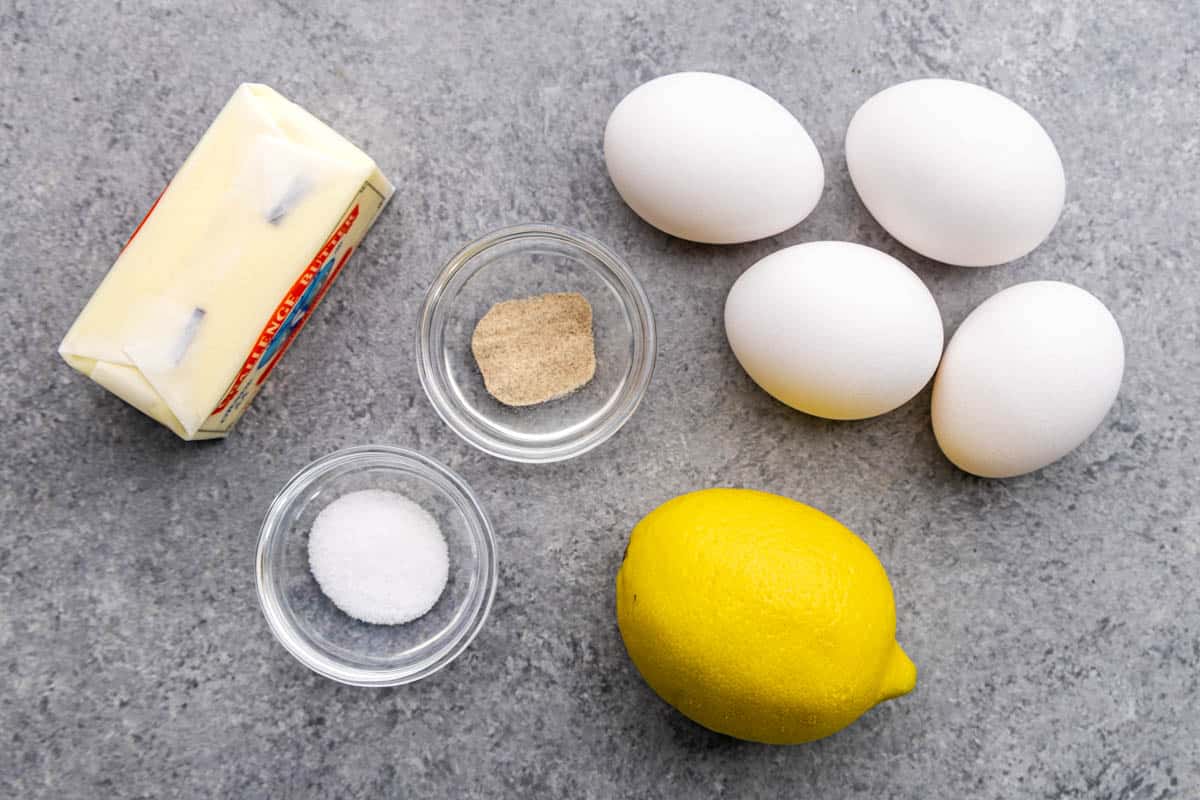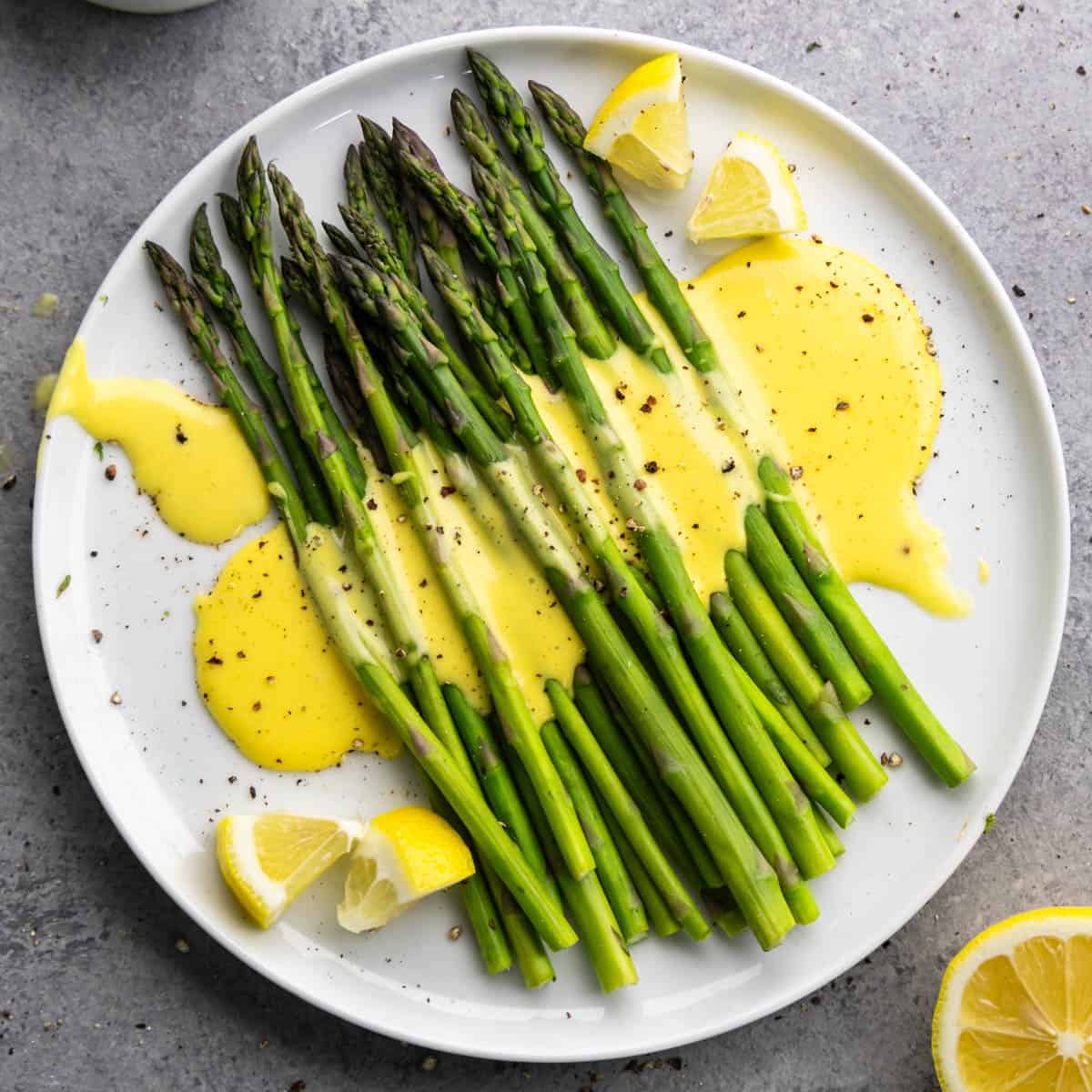Looking for a quick way to enhance your meals? Get ready for homemade hollandaise sauce. This classic sauce turns your average breakfast or dinner into something extraordinary. It is also surprisingly easy to make. Even if you make a small mistake and the sauce breaks, it still tastes amazing. And the best part? You probably have all the ingredients in your kitchen right now.
If you love hollandaise sauce, you absolutely must try it on poached eggs or roasted asparagus! It’s a game changer!
Why You’ll Love This Recipe
- One of the five mother sauces in French cuisine!
- No-fail method using a blender to ensure a smooth, velvety texture.
- Detailed steps and troubleshooting so anyone can use this recipe regardless of skill level.

Hollandaise Sauce Recipe
Hollandaise sauce has a rich, buttery base and a delightful tang from fresh lemon juice. Its smooth and creamy texture feels luxurious with a subtle flavor of egg yolks with a hint of white pepper to give a bite.
Ingredient Notes

- Eggs: the base for hollandaise sauce. These cannot be substituted.
- Butter: our recipe calls for salted because that’s what our audience tends to have on hand for eating and cooking. Unsalted works just as well and gives you more control over the salt content.
- Lemon Juice: freshly squeezed lemon juice is preferred for the best flavor, but bottled lemon juice will also work.
- Salt: use regular table salt for best results. Salts with a larger granule size will require adjustments to the amount you use.
- White Pepper: used for the distinct flavor, but also because it blends in with the sauce better. Black pepper also works in the same amount but will result in black specks in your hollandaise sauce.
Serving Options and Ideas
- Eggs Benedict: The classic choice. Layer an English muffin with a slice of ham or bacon, a poached egg, and a generous drizzle of hollandaise.
- Savory Crepes: Fill your crepes with sautéed spinach, mushrooms, and cheese. Top with hollandaise sauce for a creamy finish.
- Vegetable Omelets: Add a luxurious touch to a fluffy omelet filled with your favorite vegetables by spooning some hollandaise sauce on top.
- Avocado Toast: Elevate your avocado toast by adding poached eggs on top and finishing it with a drizzle of hollandaise.
- Asparagus and Hollandaise: Perfect for a spring brunch, serve blanched or grilled asparagus with a side of hollandaise for dipping.
- Salmon Bagel: A twist on the classic lox bagel, add a layer of hollandaise sauce for a rich and indulgent flavor.
- Roasted Brussels Sprouts: Toss roasted Brussels sprouts with a bit of hollandaise to enhance their nutty flavor.
- Baked Potatoes: Swap out traditional sour cream for hollandaise sauce on your baked potatoes for a creamy, tangy twist.

Troubleshooting
- If the sauce is too thick, whisk in a little warm water until you reach the desired consistency.
- For a sauce that’s too thin, continue blending for a bit longer, or add an additional yolk and blend until thickened.
Tips From the Chef
- Take It Slow with the Butter: One key to preventing your sauce from breaking is to add the butter slowly. If you pour it in too quickly, the fats can separate from the liquids.
- Temperature Matters: If your sauce starts to break, it might be a sign that the butter was too hot when added. Let the mixture cool down for a few minutes, then give it another whirl in the blender. Sometimes, all it needs is a slight temperature adjustment to come back together.

How to Store Hollandaise Sauce
- Refrigeration: Store in an airtight container and use within 1-2 days.
- Freezing: Not recommended, as it can cause separation.
- Reheating: Gently warm in a double boiler or microwave at low power, stirring frequently.





